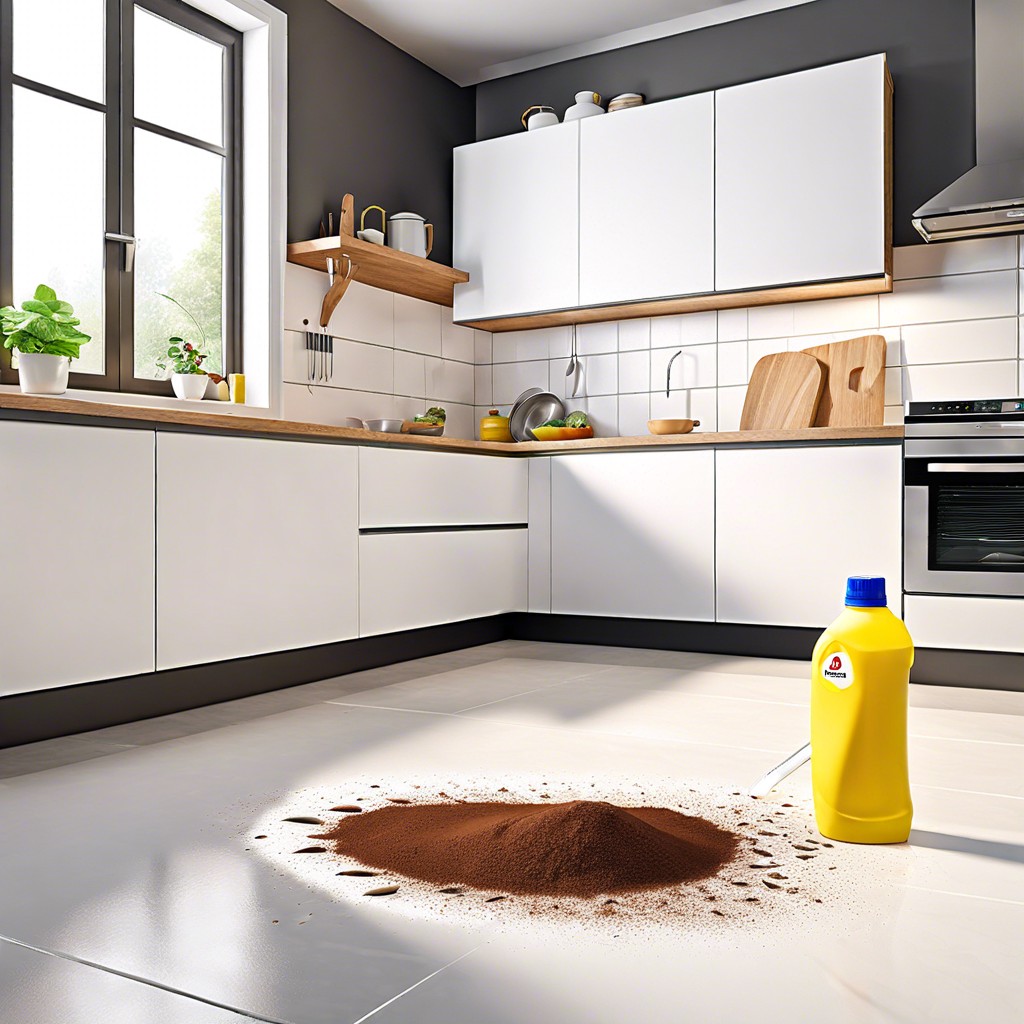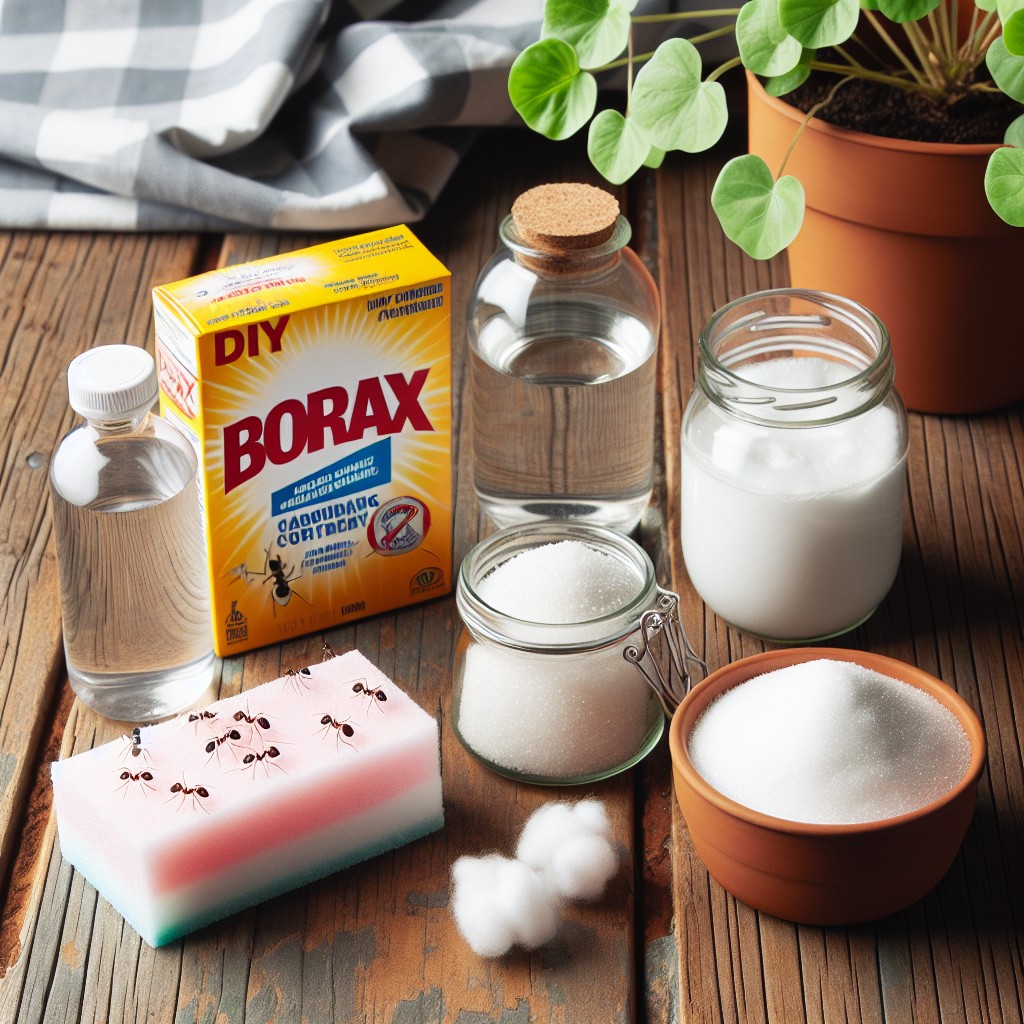Last updated on
Discover practical home remedies to keep cockroaches at bay using everyday items.
Key takeaways:
- Boric acid disrupts roaches’ digestive systems over time.
- Diatomaceous earth slices through roaches’ exoskeletons, causing dehydration.
- Essential oils like peppermint and tea tree repel roaches.
- Keep your home dry to discourage roach infestations.
- Seal entry points with caulk and weather-stripping to keep roaches out.
What's Inside
Sprinkle a Pinch of Boric Acid

Boric acid acts like ninja dust for those pesky roaches. It’s a powdery substance that, when sprinkled in corners and crevices, goes all ninja on roaches. See, once they bumble into this powder, it clings to them like a bad habit. As they clean themselves—which they do often because, even as pests, roaches are quite the fastidious groomers—they ingest it. That’s when the magic happens.
This powder is not a quick fix; it’s a slow and silent cockroach conqueror. Boric acid disrupts their digestive system and works its deadly charm over time. Patience is key; expect to see a gradual decrease in your uninvited guests rather than an instant ghost town.
But here’s the kicker — you can’t just sprinkle it like fairy dust and hope for the best. Roaches are crafty. Cover their favorite hangouts: under the sink, behind the fridge, or that shadowy space behind the stove. Keep it away from kids and pets, though. Safety first!
It’s low-cost and can be a game-changer in your battle against the bugs. Remember, this isn’t a one-time rodeo; you’ll need to reapply after cleaning sessions to keep your home roach-free.
Deploying Diatomaceous Earth Against Cockroaches
Diatomaceous earth (DE) works wonders for those pesky intruders. Think of it as microscopic shards that don’t harm us but are deadly ballet dancers to cockroaches, slicing through their exoskeletons and causing dehydration. This fine powder, derived from fossils, is a non-toxic marvel and a jerk to roaches.
For application, imagine you’re dusting a cake with powdered sugar, but in this case, sprinkle DE where the parties happen – along baseboards, in cabinets, near the trash can, or under the sink. Less is more: a fine dust is sufficient. Heavy piles might just give the roaches a mountain to avoid, and we want them to strut right through it.
Remember, patience is your new best friend; DE isn’t an instant knockout but a gradual victory. Keep the area dry: water reduces DE’s effectiveness. And refresh your DE dance floor every few weeks, or after any cleaning or heavy rain if you’ve used it outside.
Essential Oils: A Fragrant Barrier
Peppermint, eucalyptus, and tea tree oils are not just for your diffuser. Roaches dislike these scents, making them effective repellents. For a DIY spray, mix a few drops of any of these oils with water in a spray bottle. Target trouble spots like kitchen corners and baseboards—aim for a fresh scent that also tells pests they’re not welcome.
Lavender oil has a reputation for being a cockroach turnoff. It’s like setting a no-entry sign at every crack and crevice. Dab cotton balls with this purple wonder and tuck them in drawers or cabinets for a long-lasting roach deterrent.
Remember, essential oils are a temporary fix. Regular application ensures these pesky critters get the message. Pair the oils with cleanliness and proper food storage, and you’ve got an aromatic force field against these six-legged invaders.
Addressing Water Leaks to Thwart Infestations
Cockroaches are like miniature aquanauts; they thrive in moist areas. A drippy faucet or a sweating pipe can be prime real estate for these critters. Keeping your kitchen and bathroom as arid as the Sahara could really put a damper on their survival plans.
Let’s dive into the action plan. Start with a thorough inspection of all plumbing. That includes pipes under sinks, toilets, and even your refrigerator’s water line if it has an ice maker or water dispenser. Any moisture, no matter how small, can be an open invitation.
Tighten those leaky joints and replace old, worn-out washers. Sometimes, you might need a bit of plumber’s tape to secure those tricky connections. If you’ve got a leak that’s out of your league, calling in a pro can save you a boatload of trouble down the line.
Remember, it’s not just the leaks—it’s also about the aftermath. Dry out the areas that were once wet. You can use a fan or a dehumidifier to speed up the process. This proactive approach will send those water-dependent roaches packing, searching for a new oasis elsewhere.
Identifying and Sealing Entry Points
Roaches are like nosy neighbors; they love to slip through the tiniest cracks. Think like a detective and inspect every nook and cranny. Check for gaps around your doors, windows, and where utility pipes enter your home. Remember, if a pencil can slide into a crack, so can a cockroach.
Once you’ve done your sleuthing, it’s time to shut them out for good. Caulk is your friend here – it’s like putting a lock on an open door. Weather-stripping can also be a game-changer for those larger gaps under doors. Think of it as rolling out an unwelcome mat. And don’t forget those leaky pipes; roaches are thirsty critters. Patching up leaks is like taking away their water bottle during a marathon – it’s a significant deterrent.
To sum it up: seal, patch, and fix. Give roaches the ‘no vacancy’ sign. With thoroughness and a bit of elbow grease, you can say goodbye to unexpected creepy crawly guests.
Continue reading:



